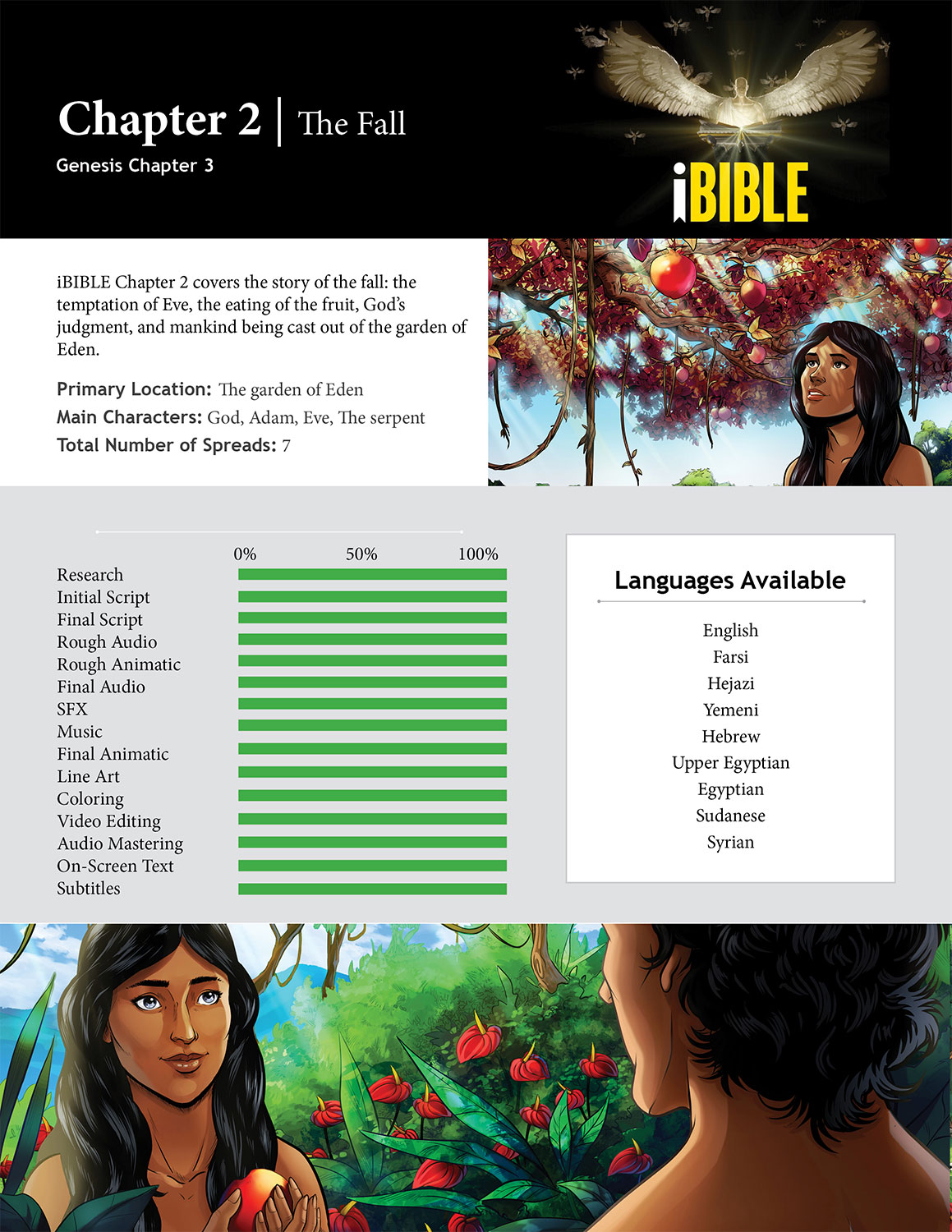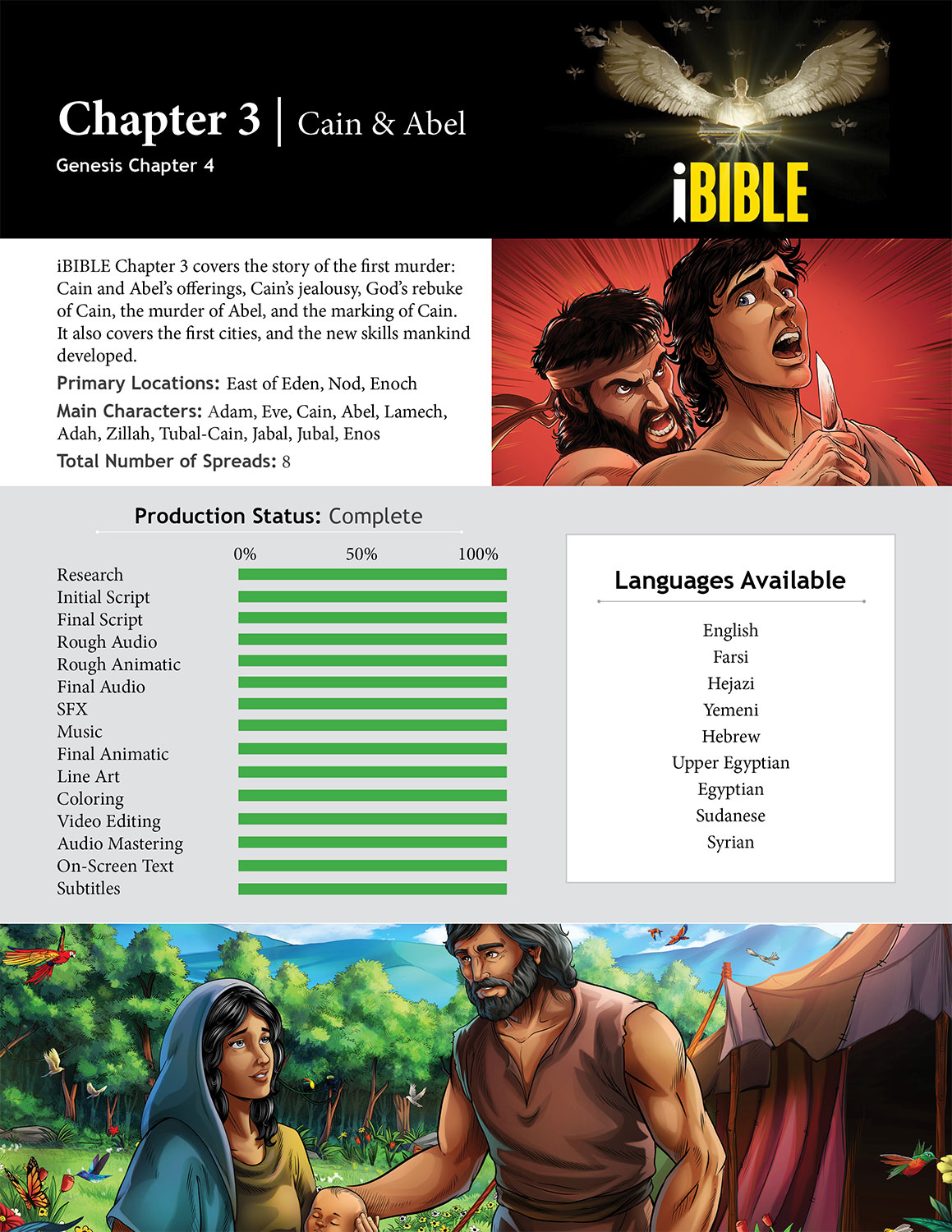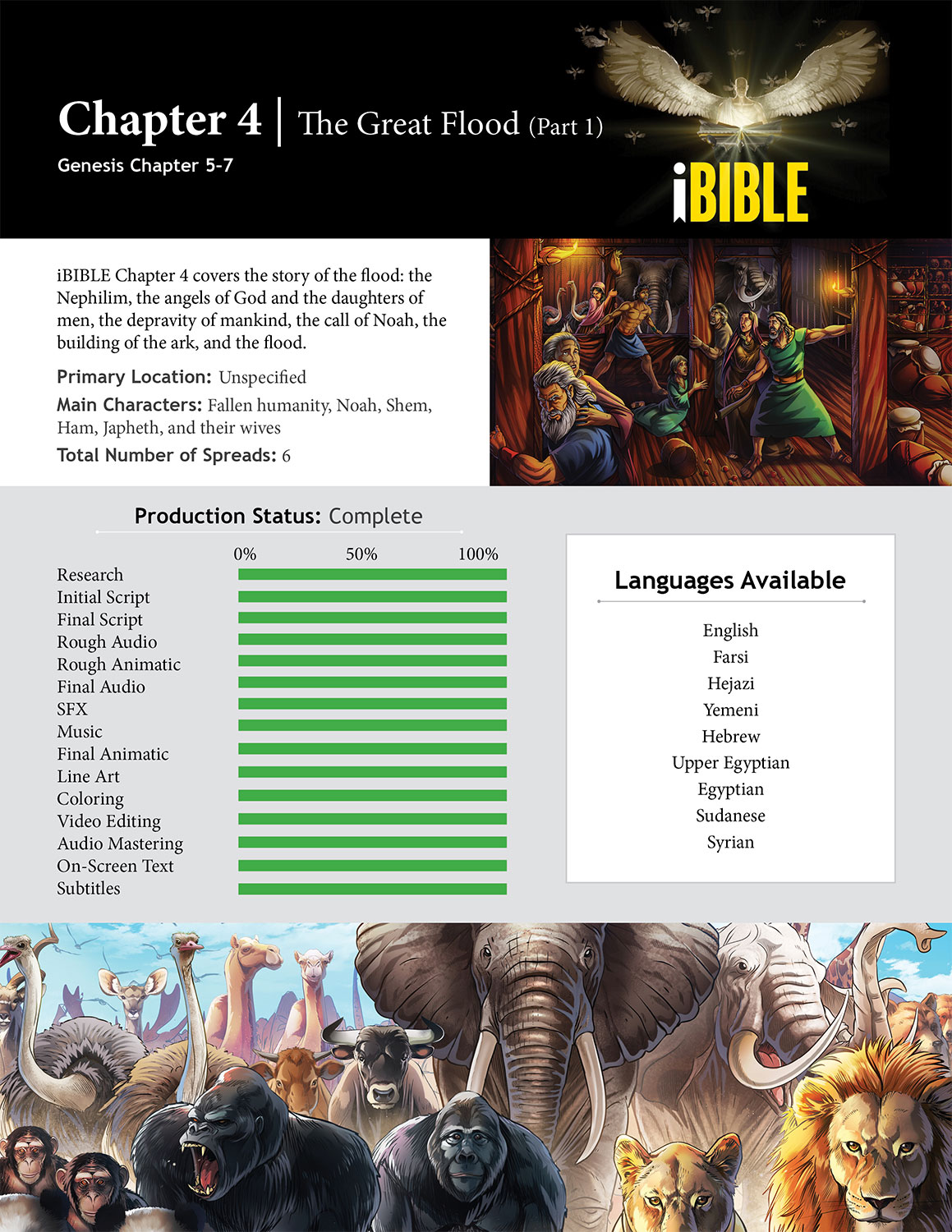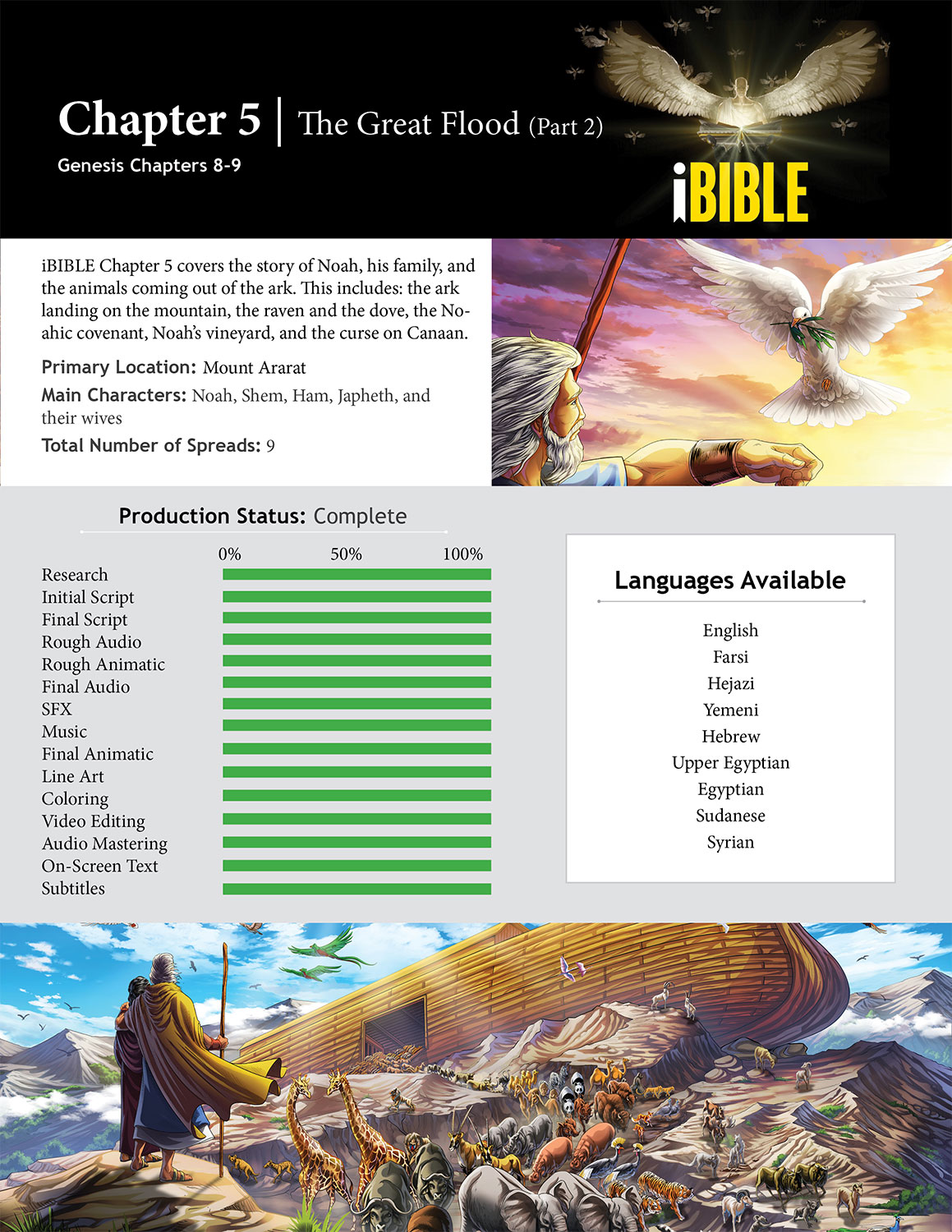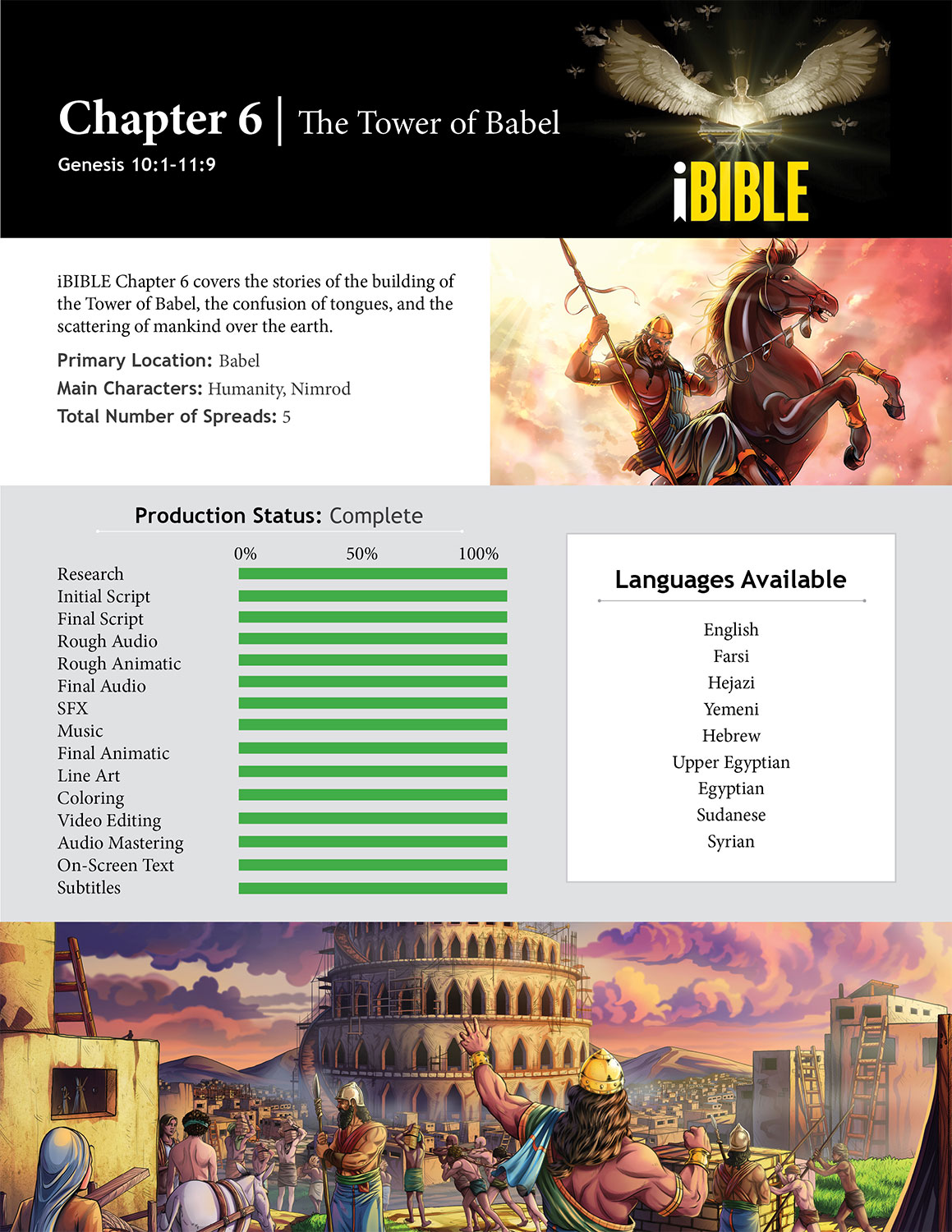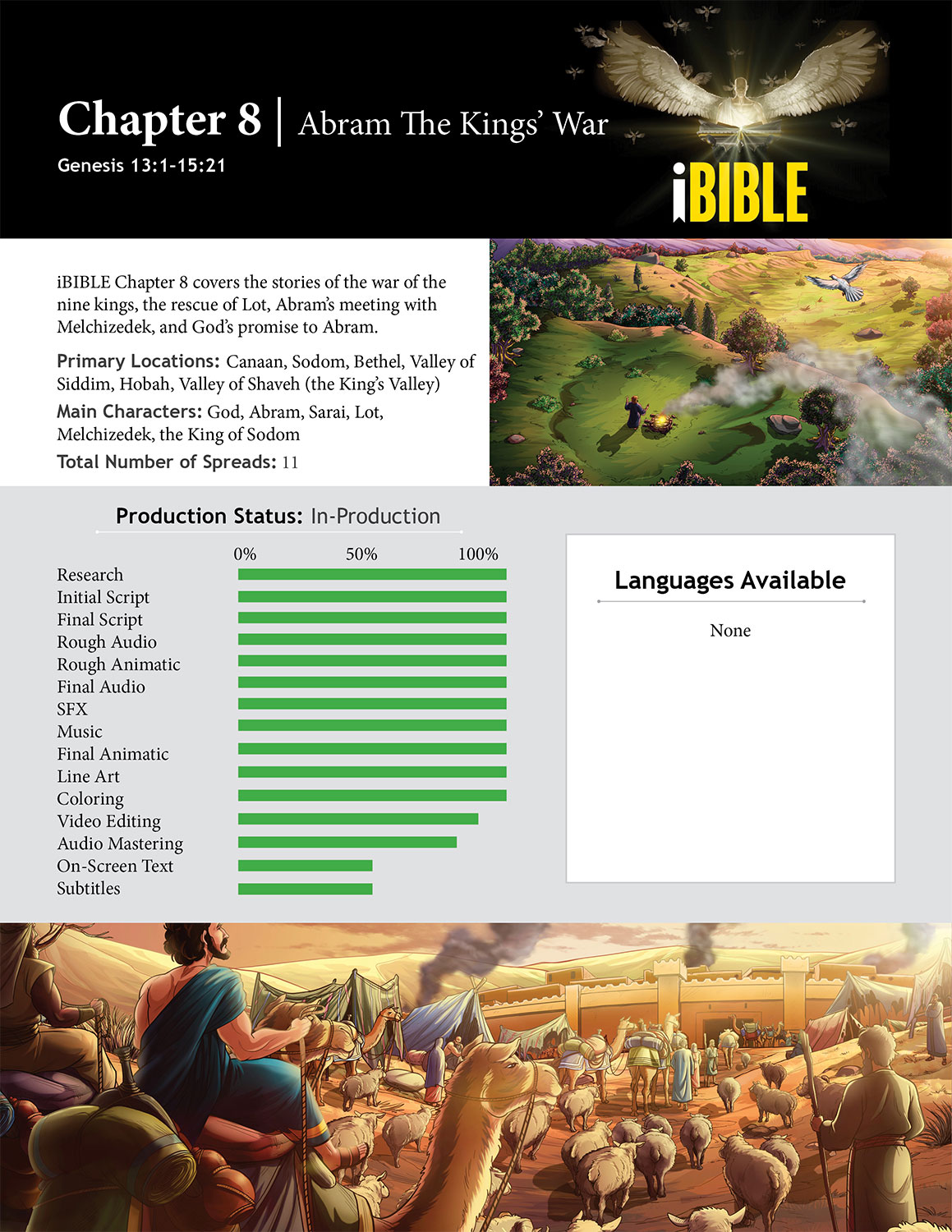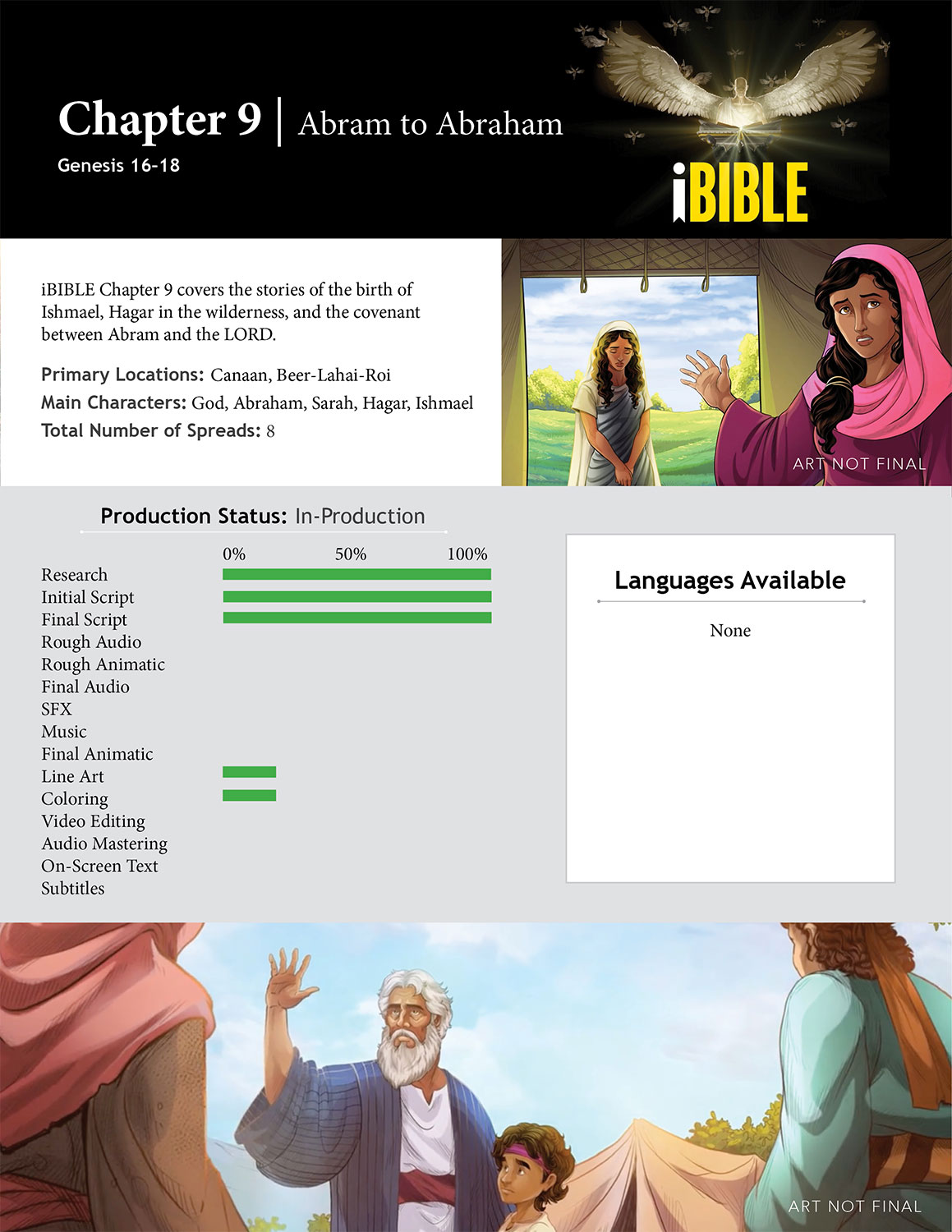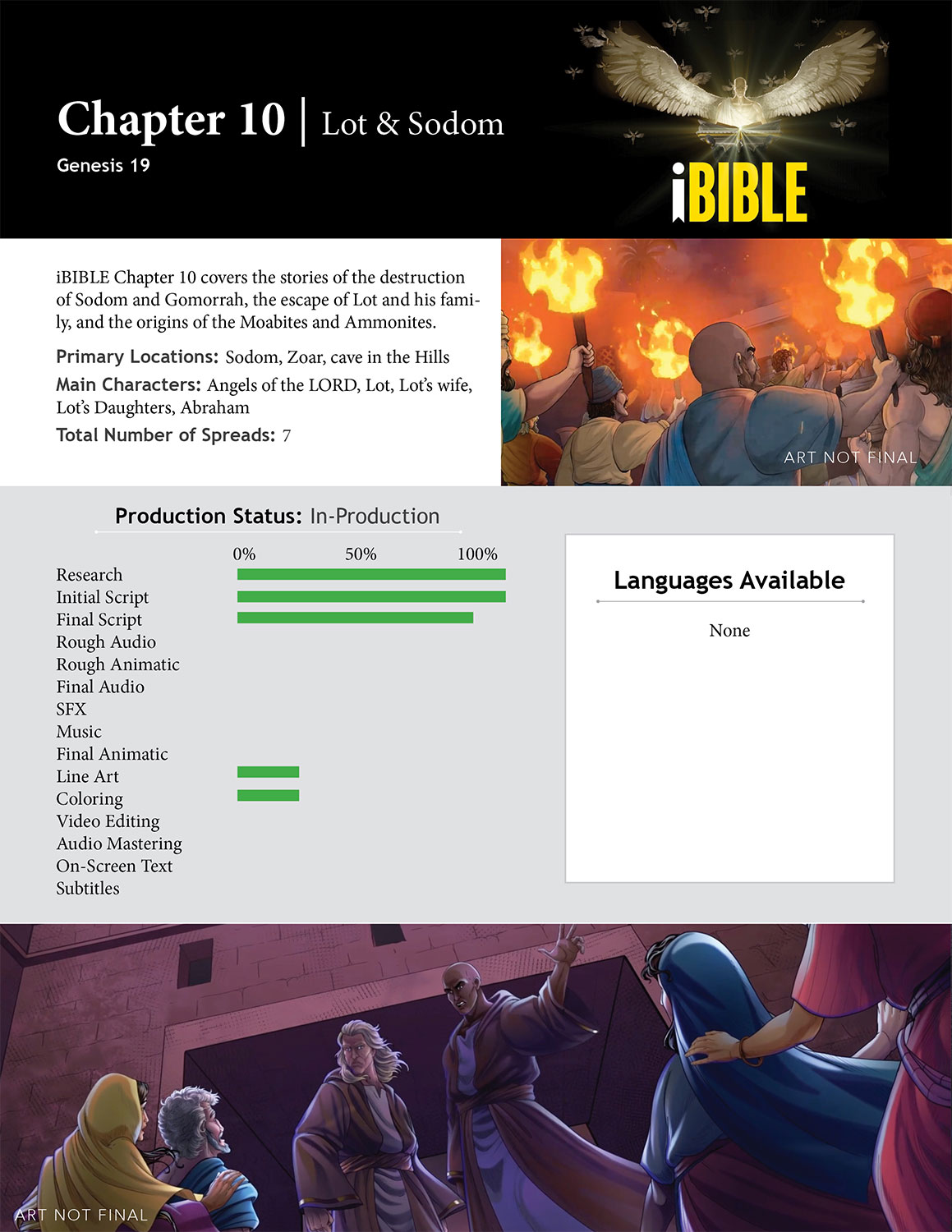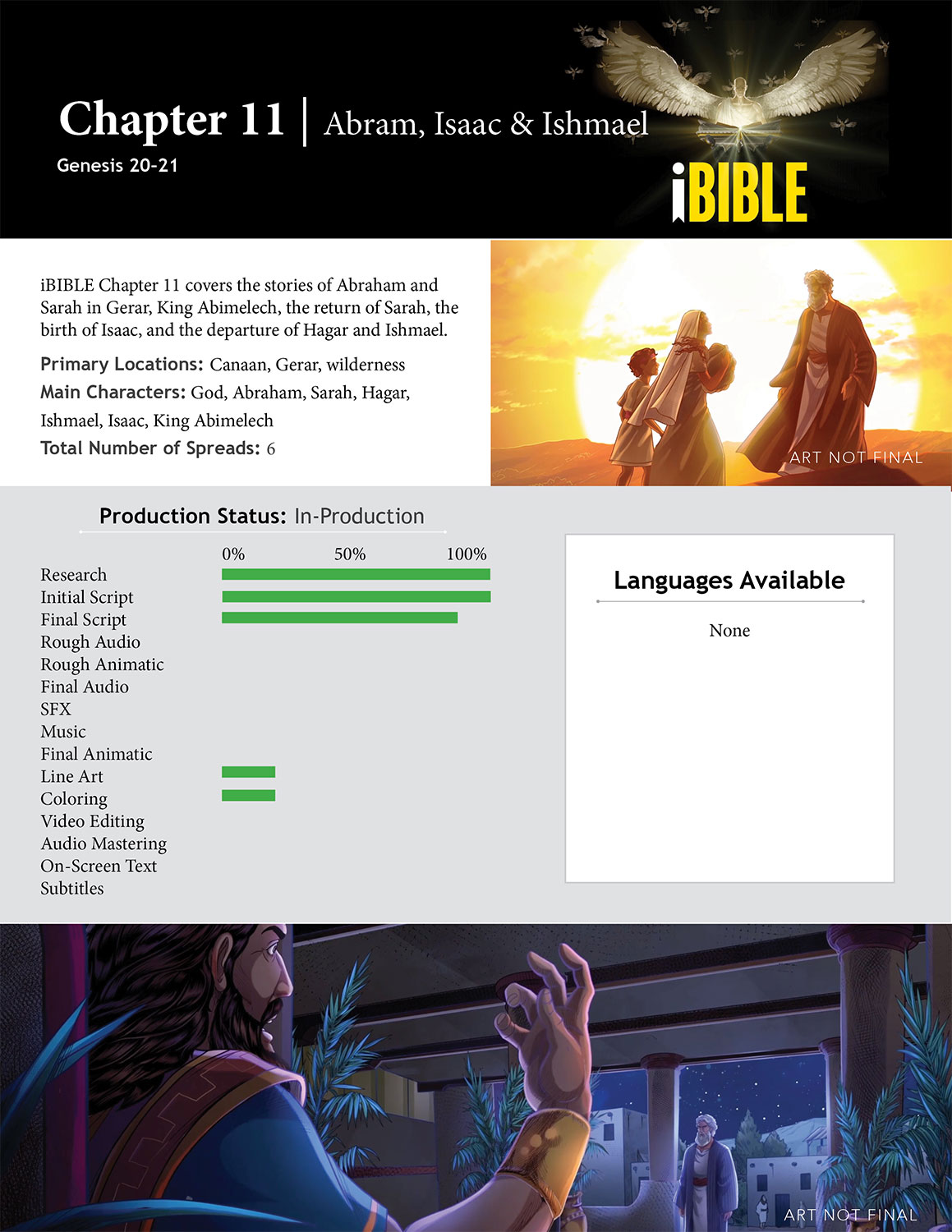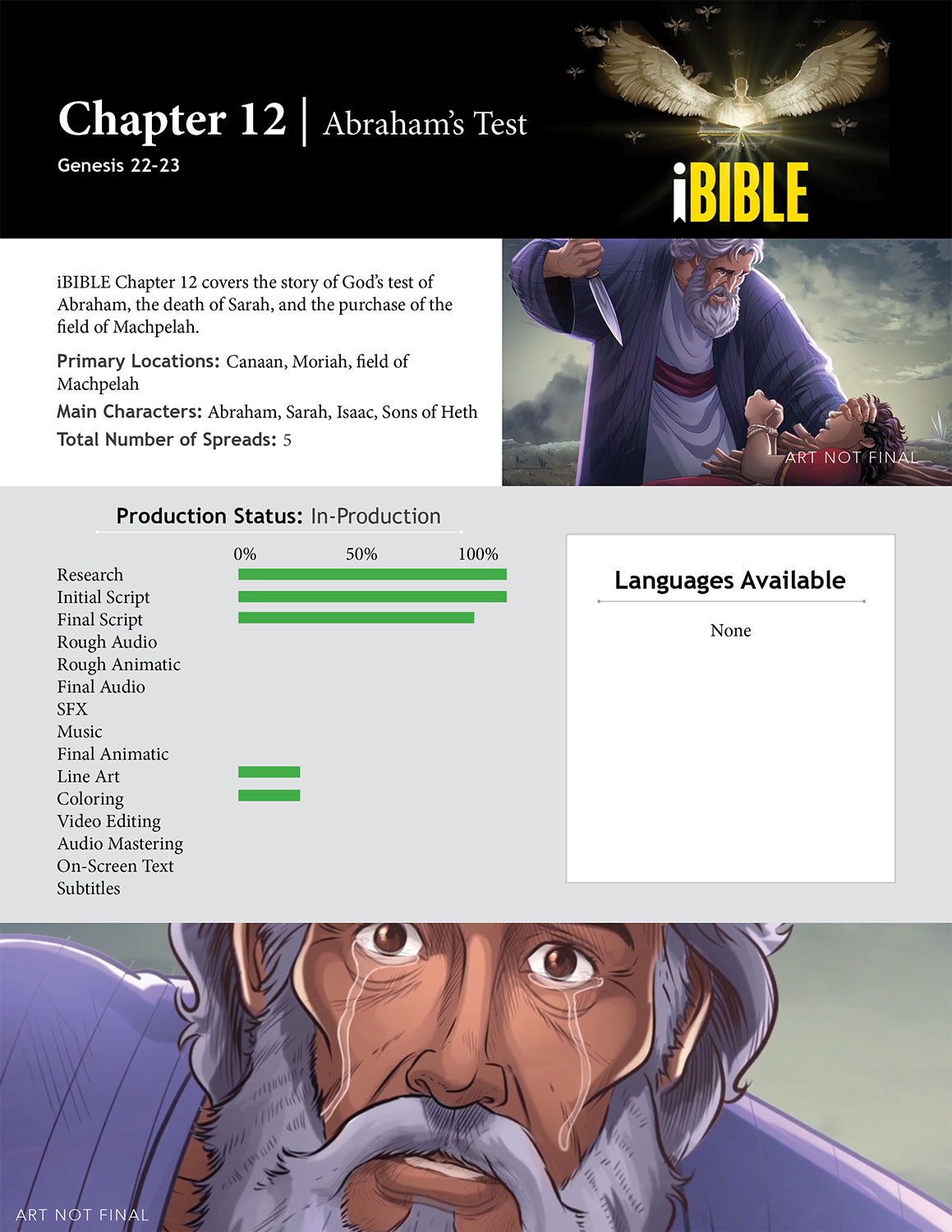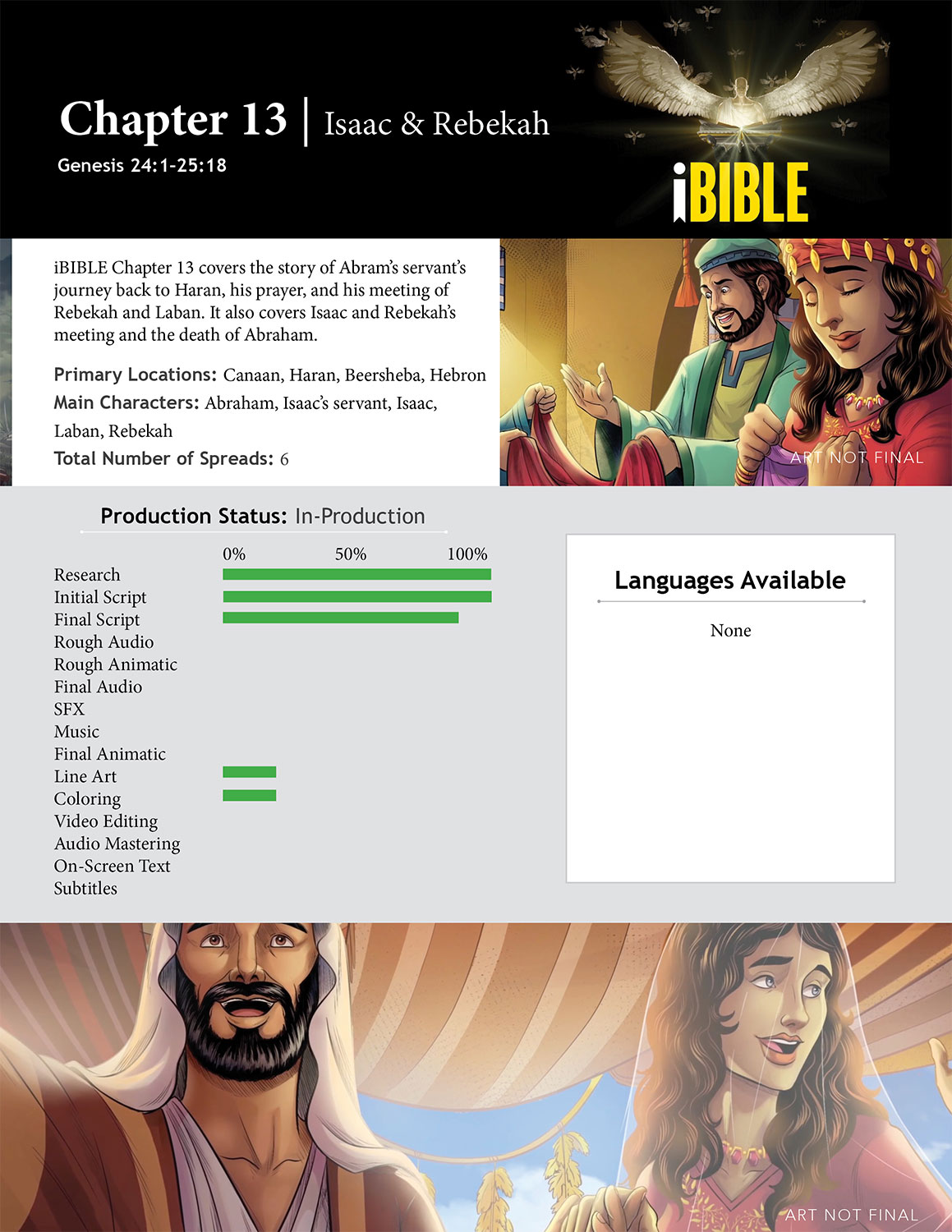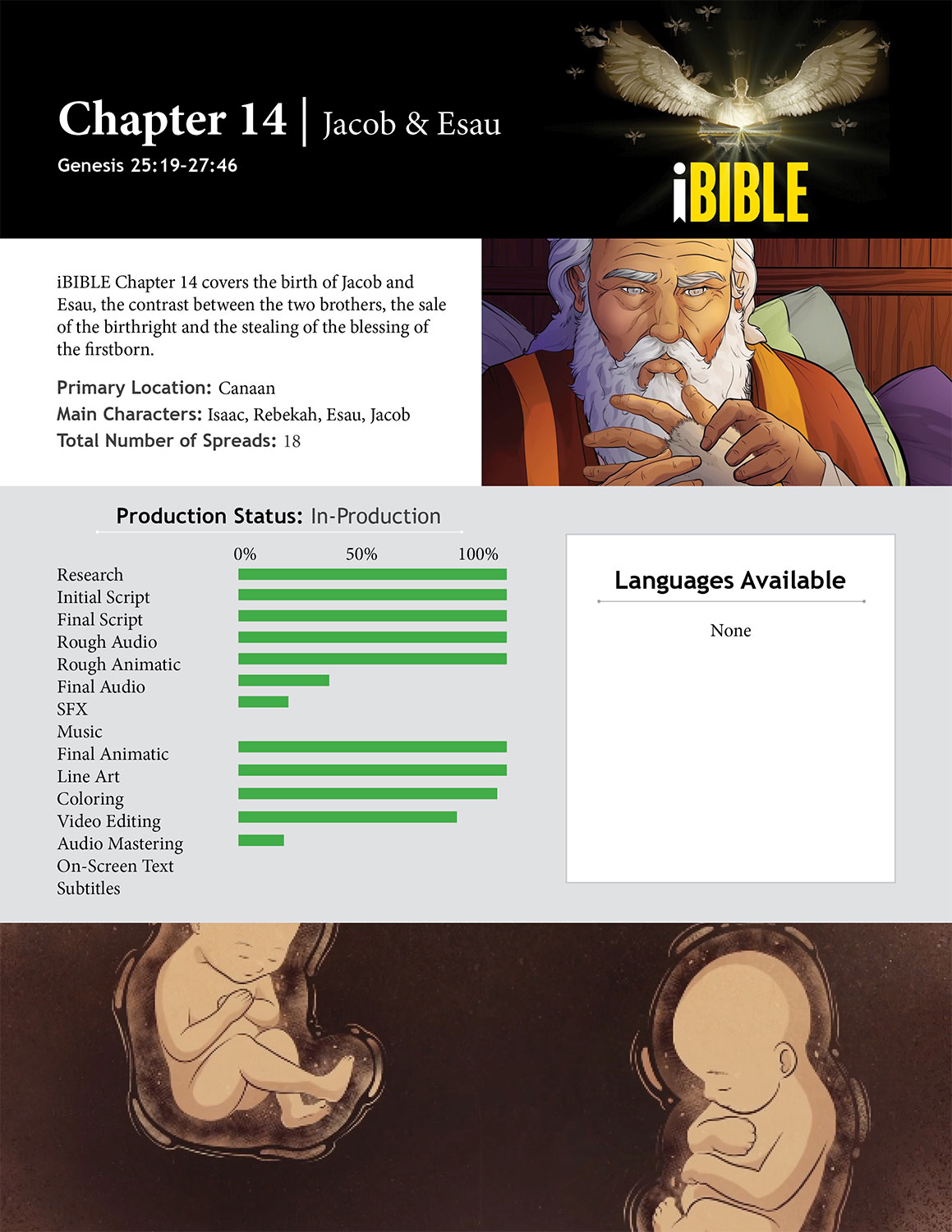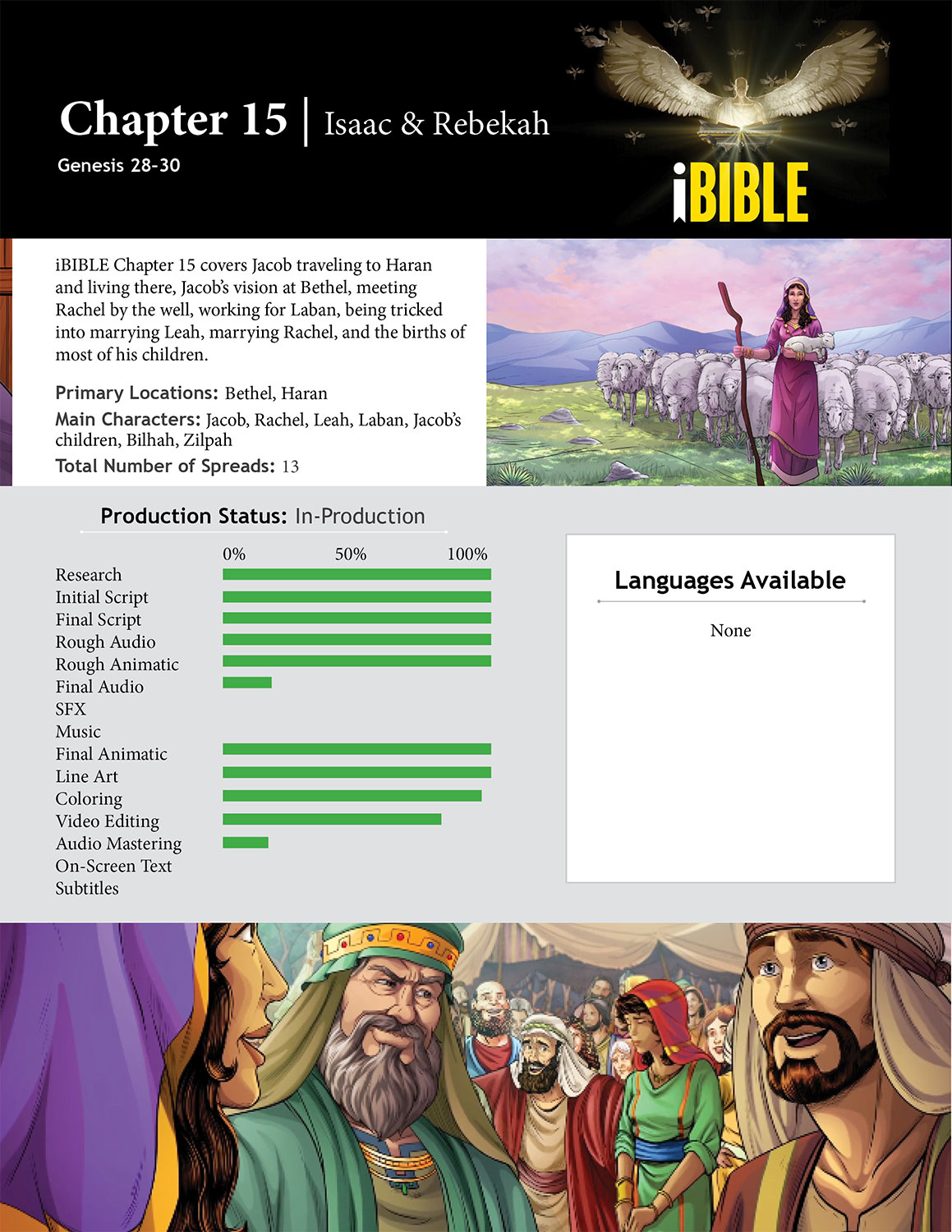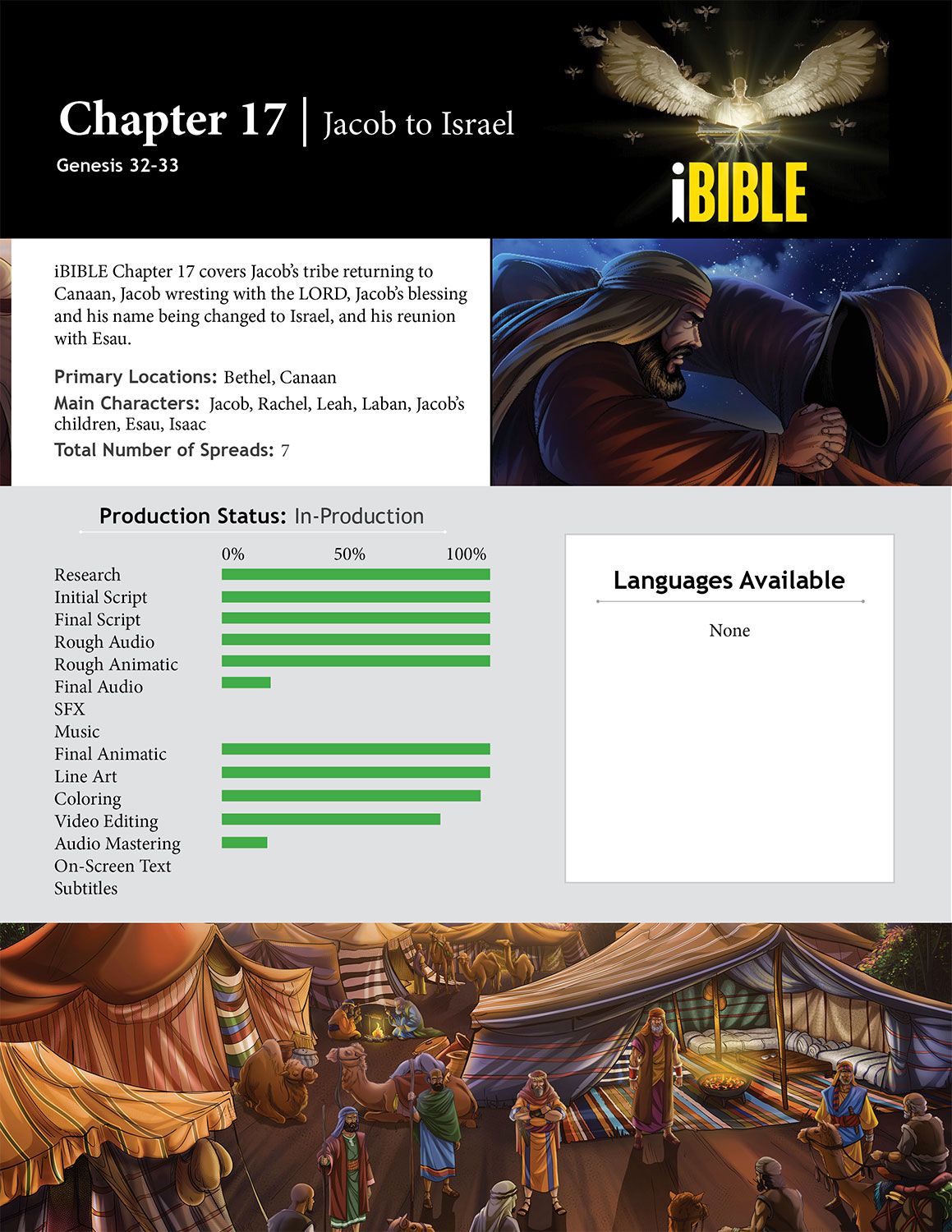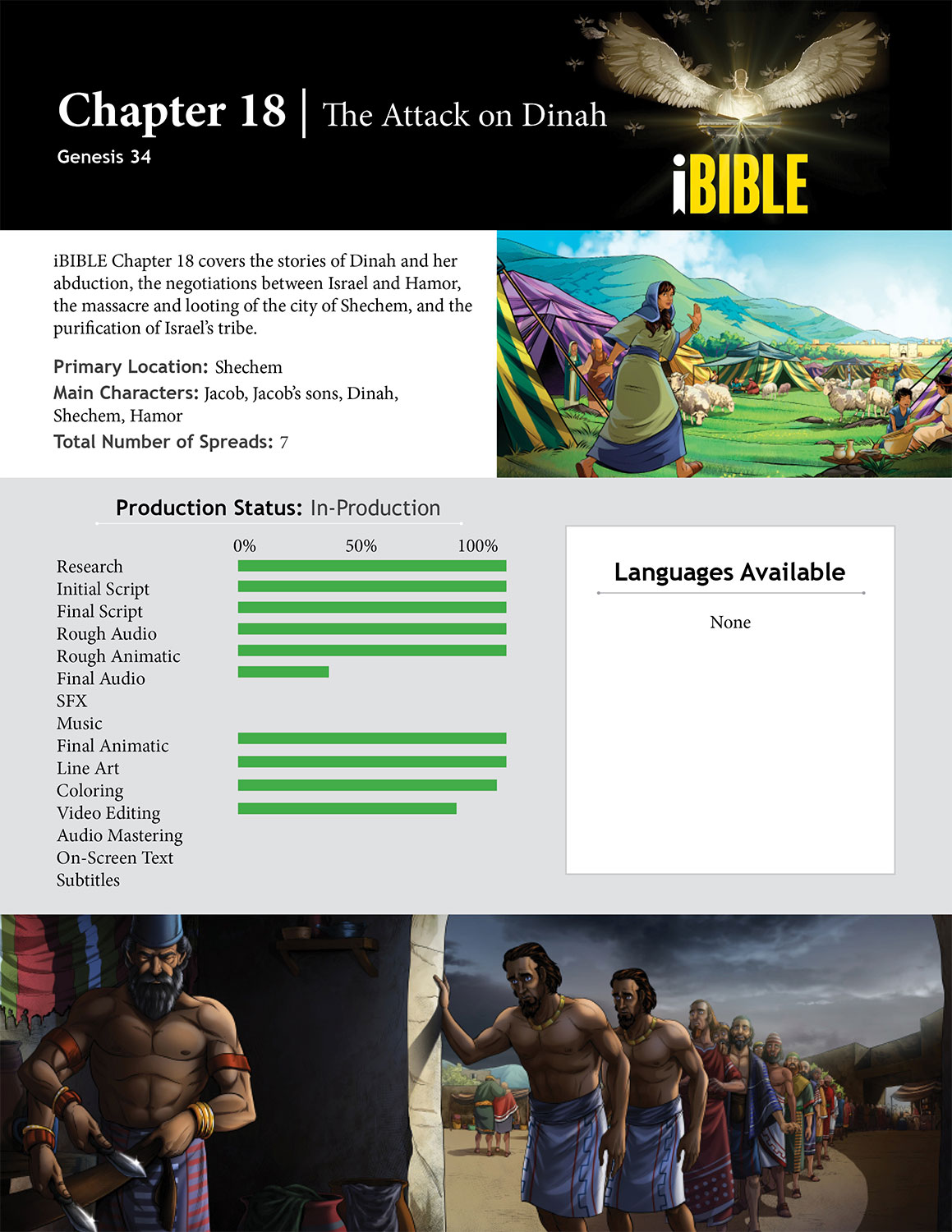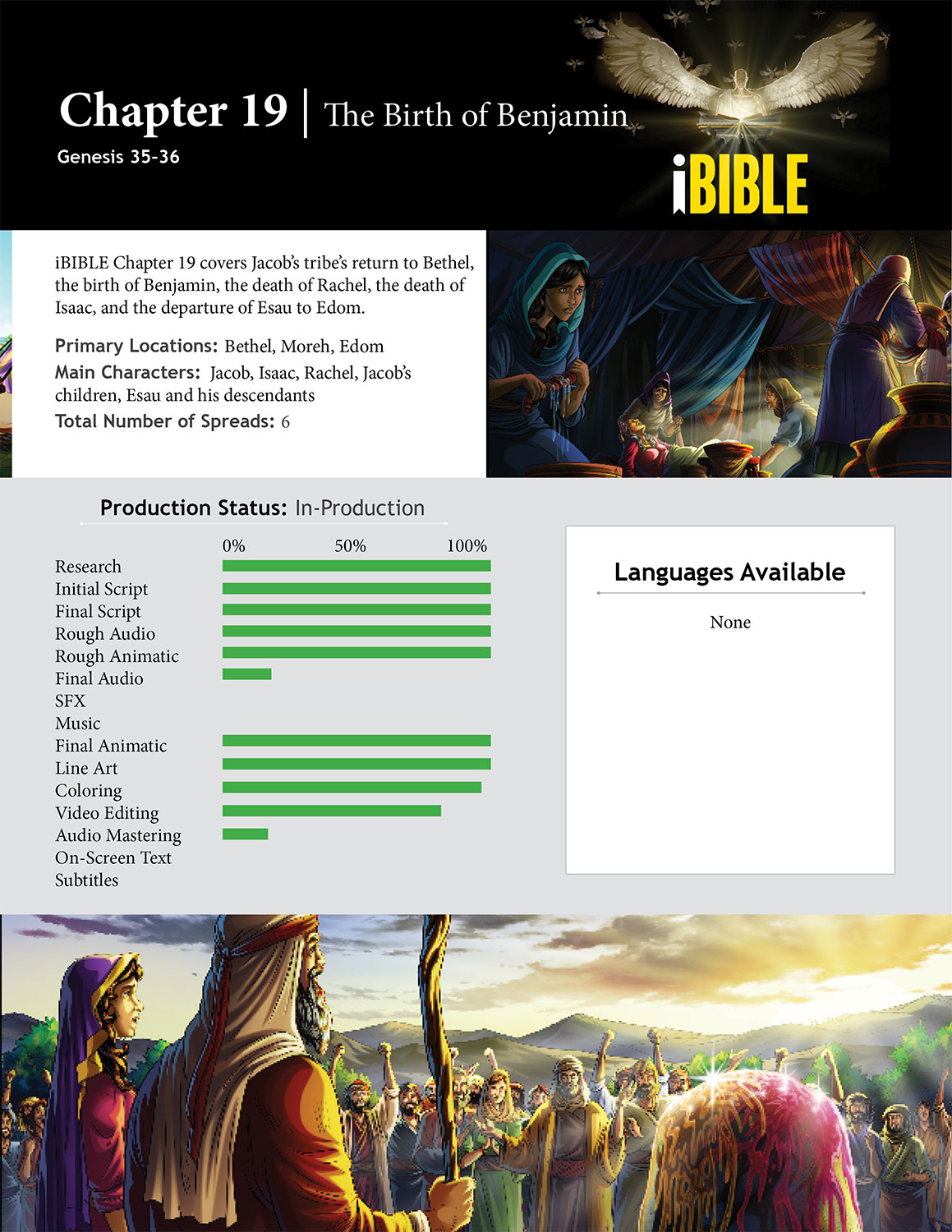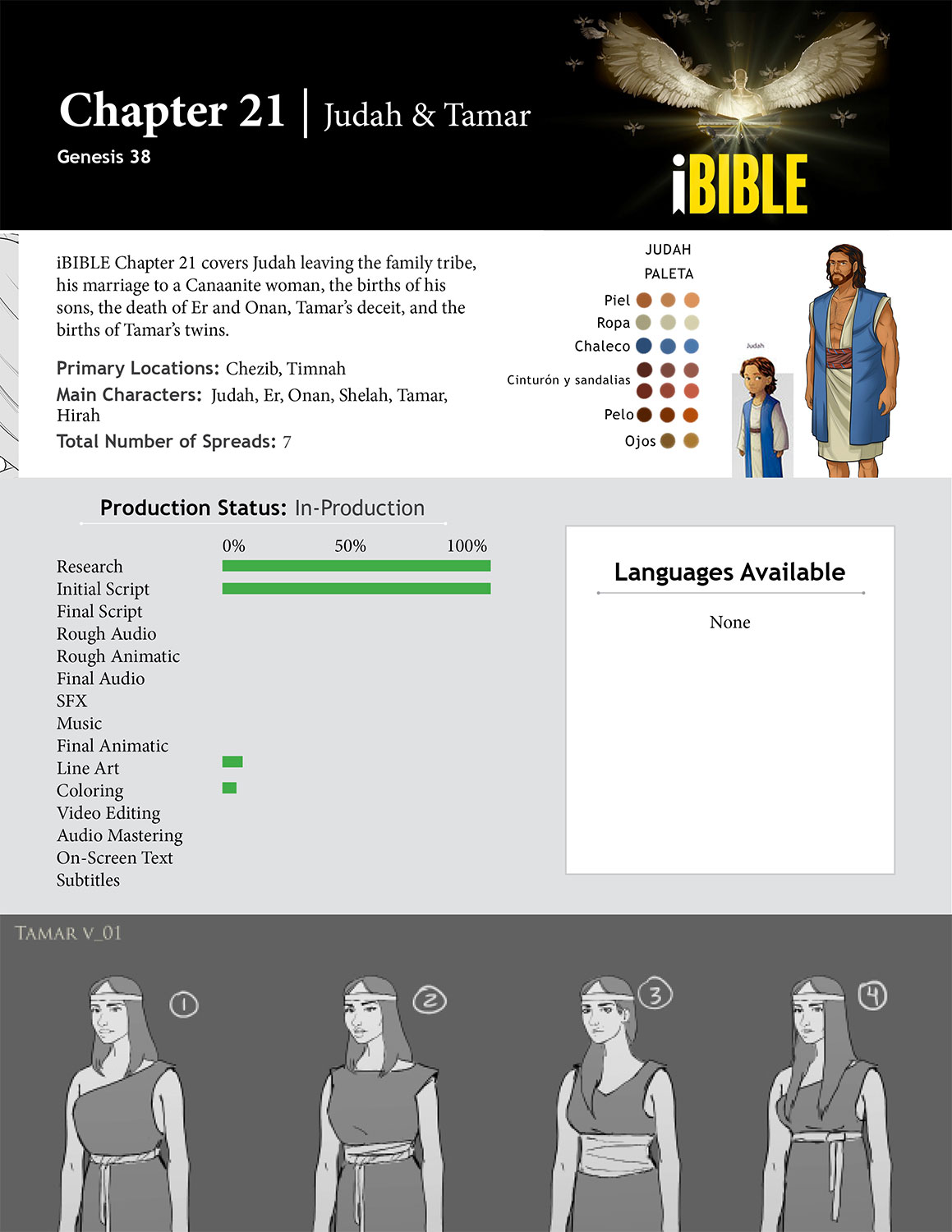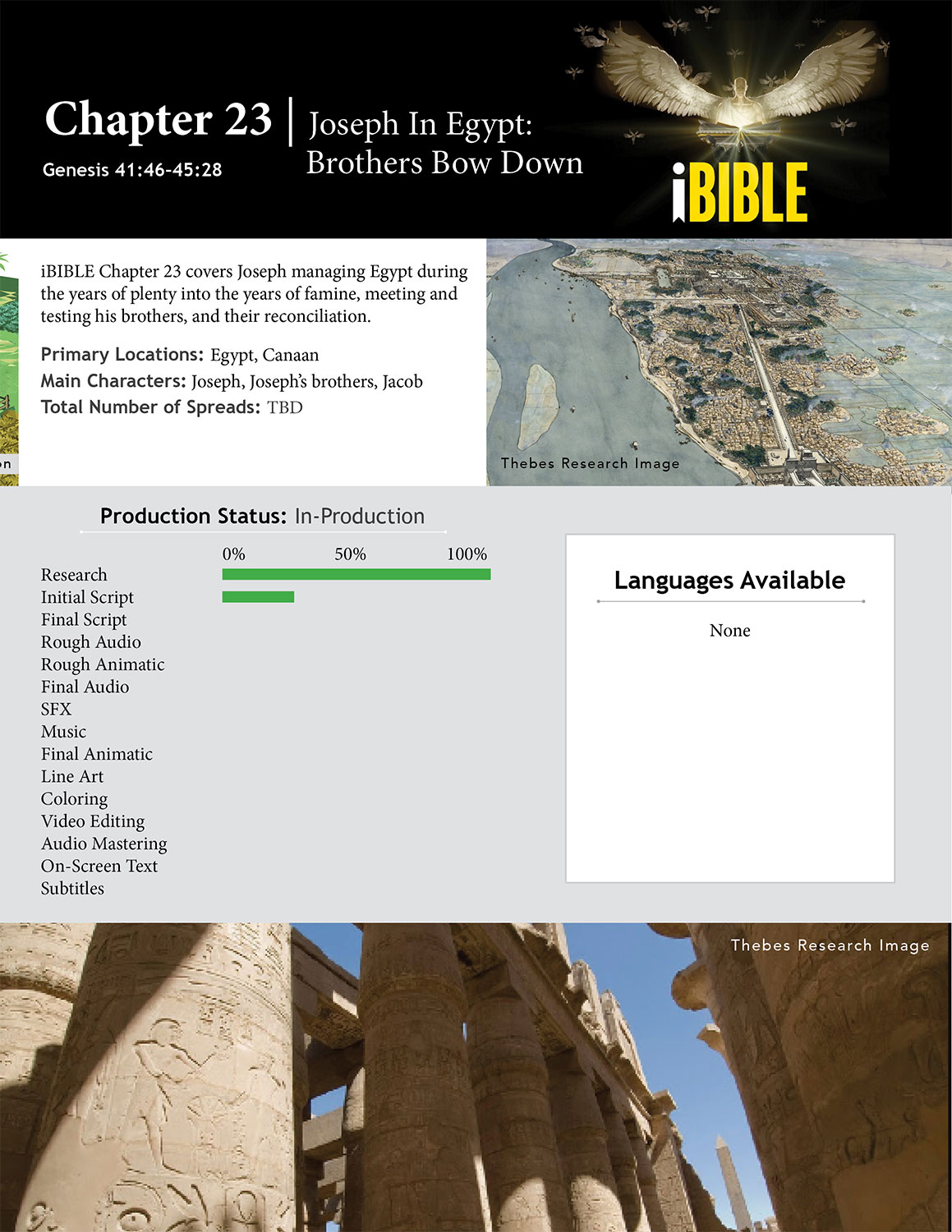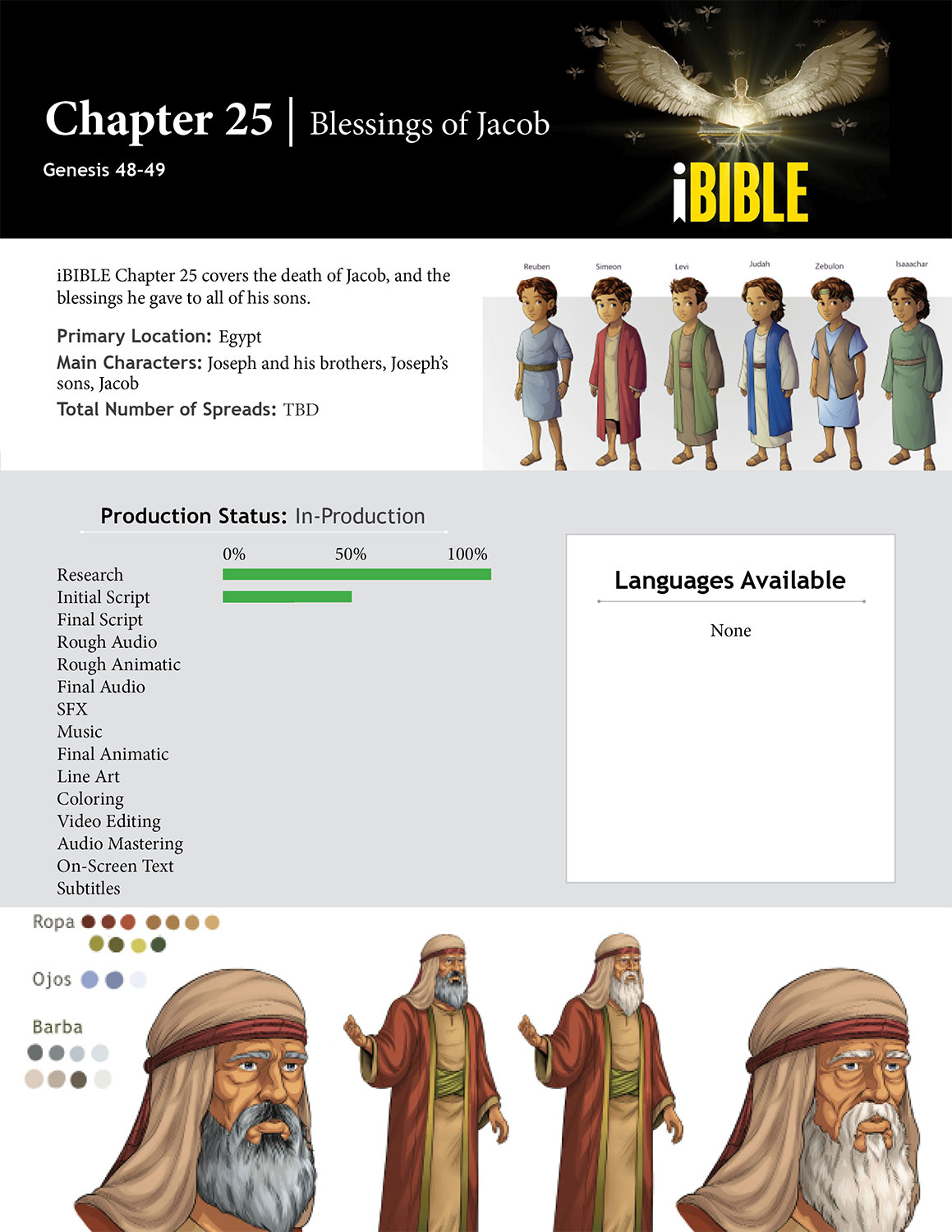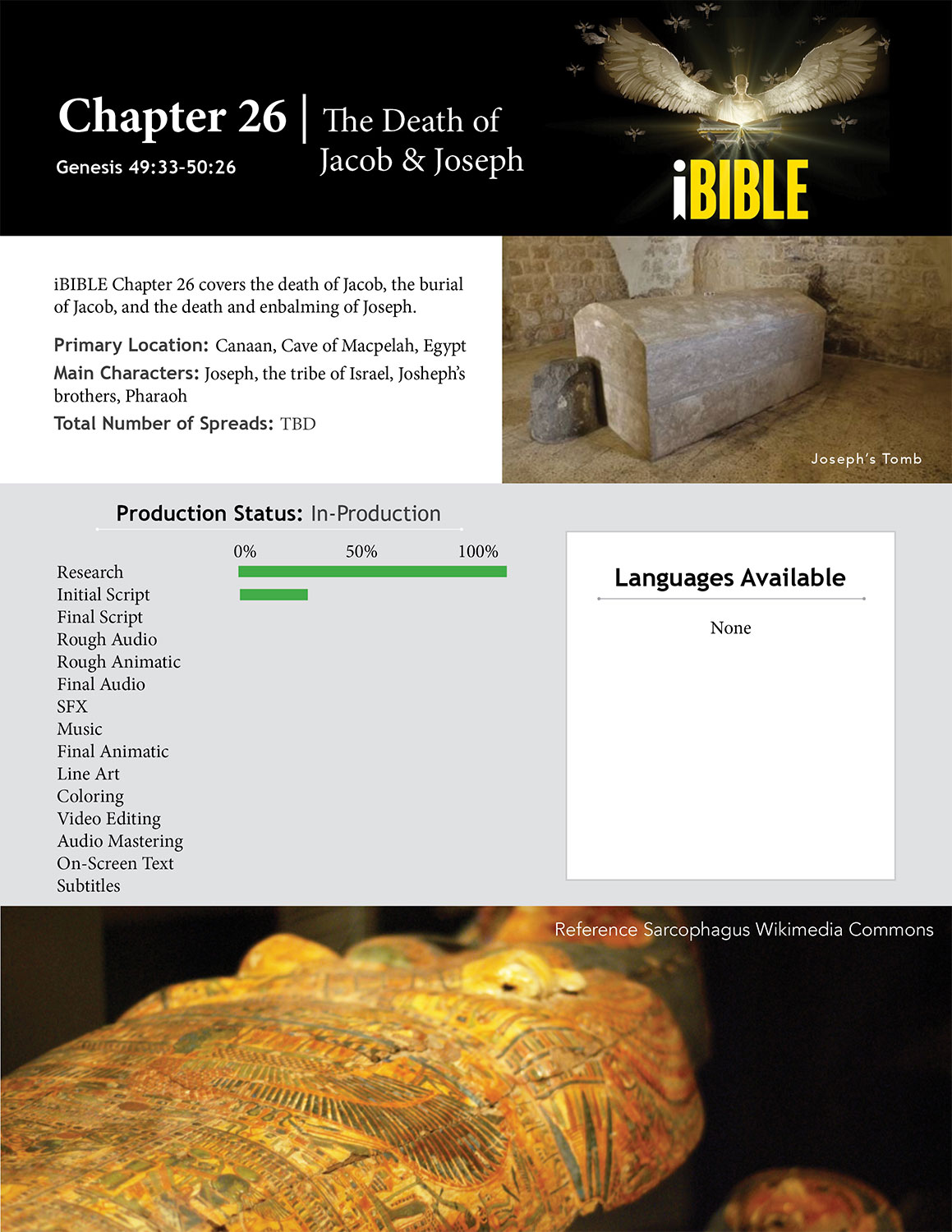Animating the Ishtar Gate of Babylon
RevelationMedia is bringing Scripture to life through carefully crafted 3D animations. Explore the latest installment of iBIBLE, the world’s first fully animated journey through the Divine Narrative, from Genesis to Revelation. Join families worldwide and watch now at www.i.BIBLE!
This week, enter through the capital gates of ancient Babylon. See how the animators at RevelationMedia are reconstructing the grandeur of this iconic Mesopotamian city for upcoming episodes of iBIBLE.
Below is an aerial reconstruction capturing the entire city as it was under Nebuchadnezzar II, around 575 BC.
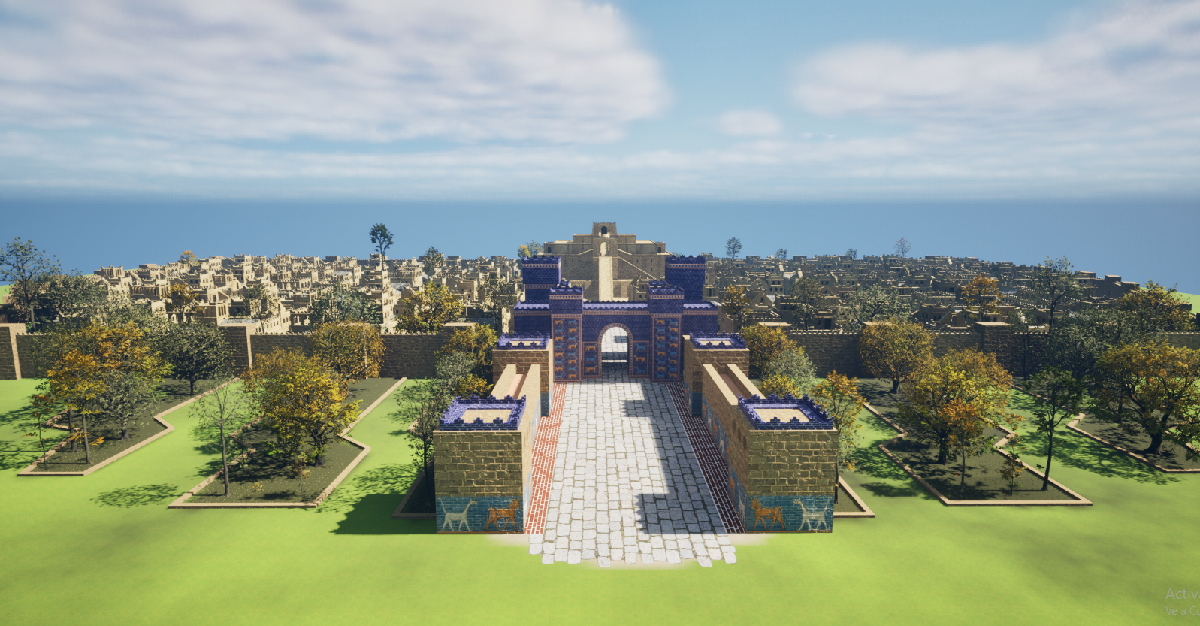
The Ishtar Gate of Babylon was considered a wonder of the ancient world. It was the largest and most elaborate of the eight Babylonian gates, rebuilt several times under the wealth of King Nebuchadnezzar II. He dedicated the grand entryway to the Babylonian goddess Ishtar, a prominent deity known for war and intimate love.
Though Babylon stood in splendor, Scripture reveals it as a tool God used to judge Israel for their idolatry, demonstrating how even powerful kingdoms serve His greater purposes.
Our animation team carefully studies the historical and archeological details of ancient cites like Babylon to accurately portray their role in the Biblical Narrative. Below you’ll see annotations on a frame suggesting edits to the fauna.
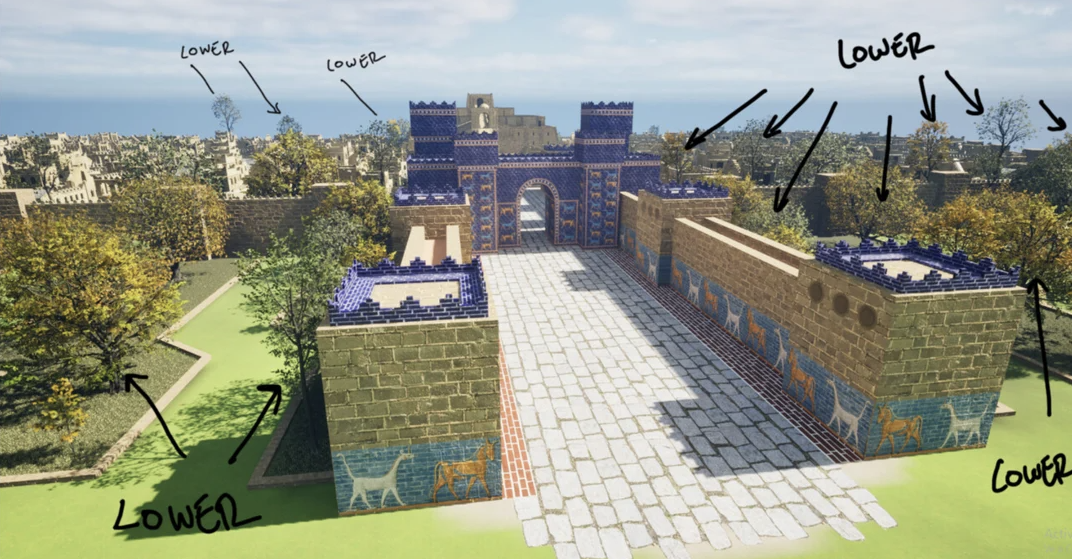
The Ishtar Gate was estimated to be over 38 feet (12 meters) tall. It was a double gateway decorated with glazed bricks bearing reliefs of dragons, bulls, and lions for protection and in honor of the Babylonian gods. Walking through the gate, passersby entered “The Processional Way,” a paved avenue stretching over half a mile toward a great ziggurat. At its base stood the temple of Marduk, Babylon’s chief god.
An interesting fact to note is that the great Babylonian ziggurat, Etemenanki, translates to “Temple of the Foundation of Heaven and Earth.” Some Biblical scholars believe the ziggurat was either a rebuild of, or inspired by, the original Tower of Babel. Our animators have reconstructed the Ishtar Gate, the Processional Way, and the great ziggurat to accurately portray Babylon.
Below is a close-up of the animal reliefs crafted onto the walls.
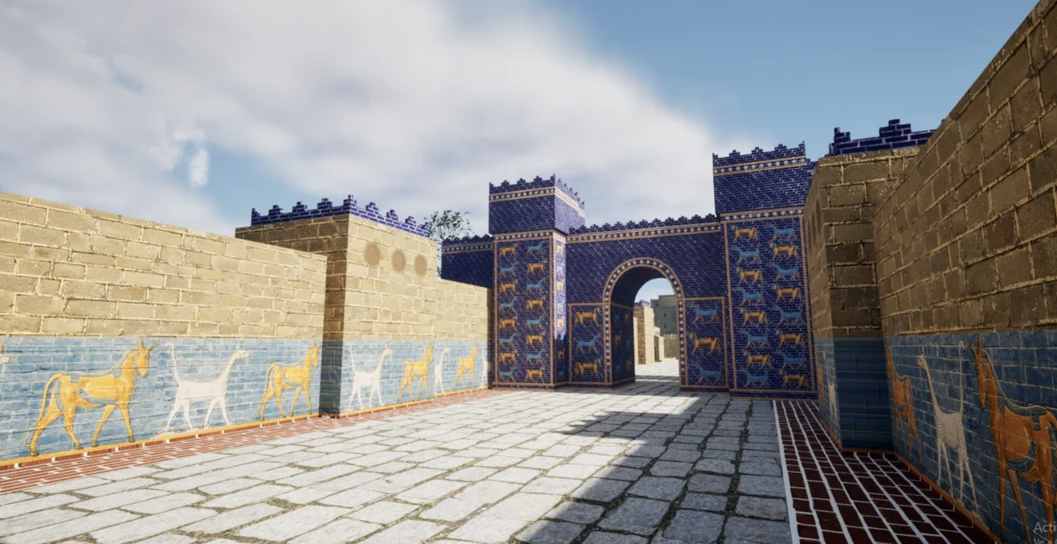
The site was excavated by German archeologist Robert Koldewey, whose work at Babylon spanned from 1899 to 1917. Today, the Ishtar Gate has been partially reconstructed using original fragments and is on display at the Pergamon Museum in Berlin.
While much of the iBIBLE site is based on research, some details are artistically interpreted. The collage below helped guide the animators’ reconstruction.
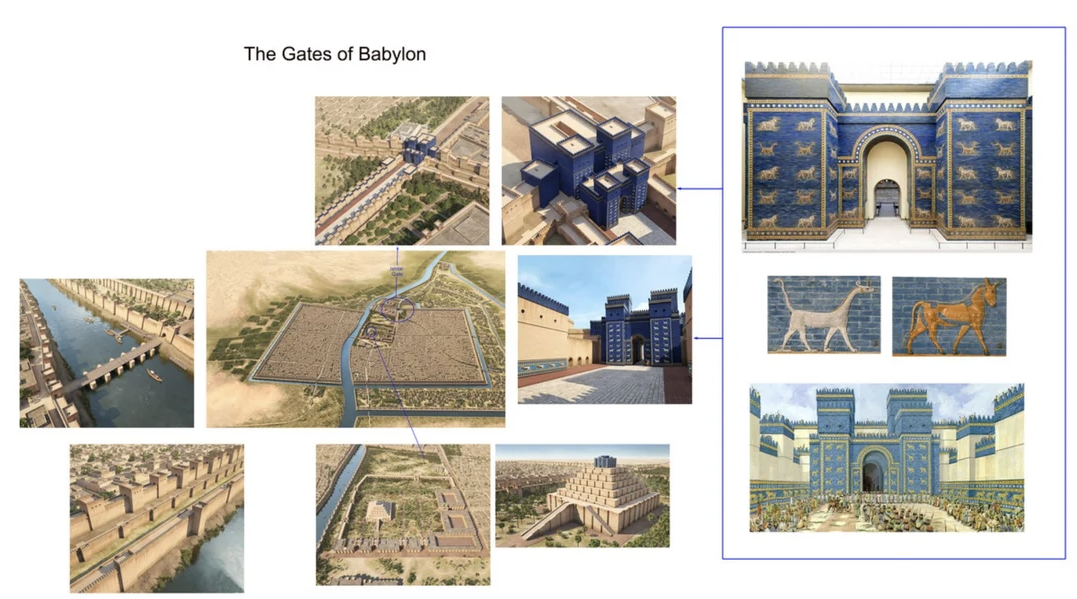
Thank you for your interest in the creation of iBIBLE! Your support helps RevelationMedia create the world’s first visual and interactive Bible for a visual and connected world. When completed, iBIBLE will include the entire Biblical Narrative. Watch it today at www.i.BIBLE!
Prayerfully consider partnering with RevelationMedia to help us create and share iBIBLE and other high-quality Christian content, free for the US, the global missions community, and the world.





